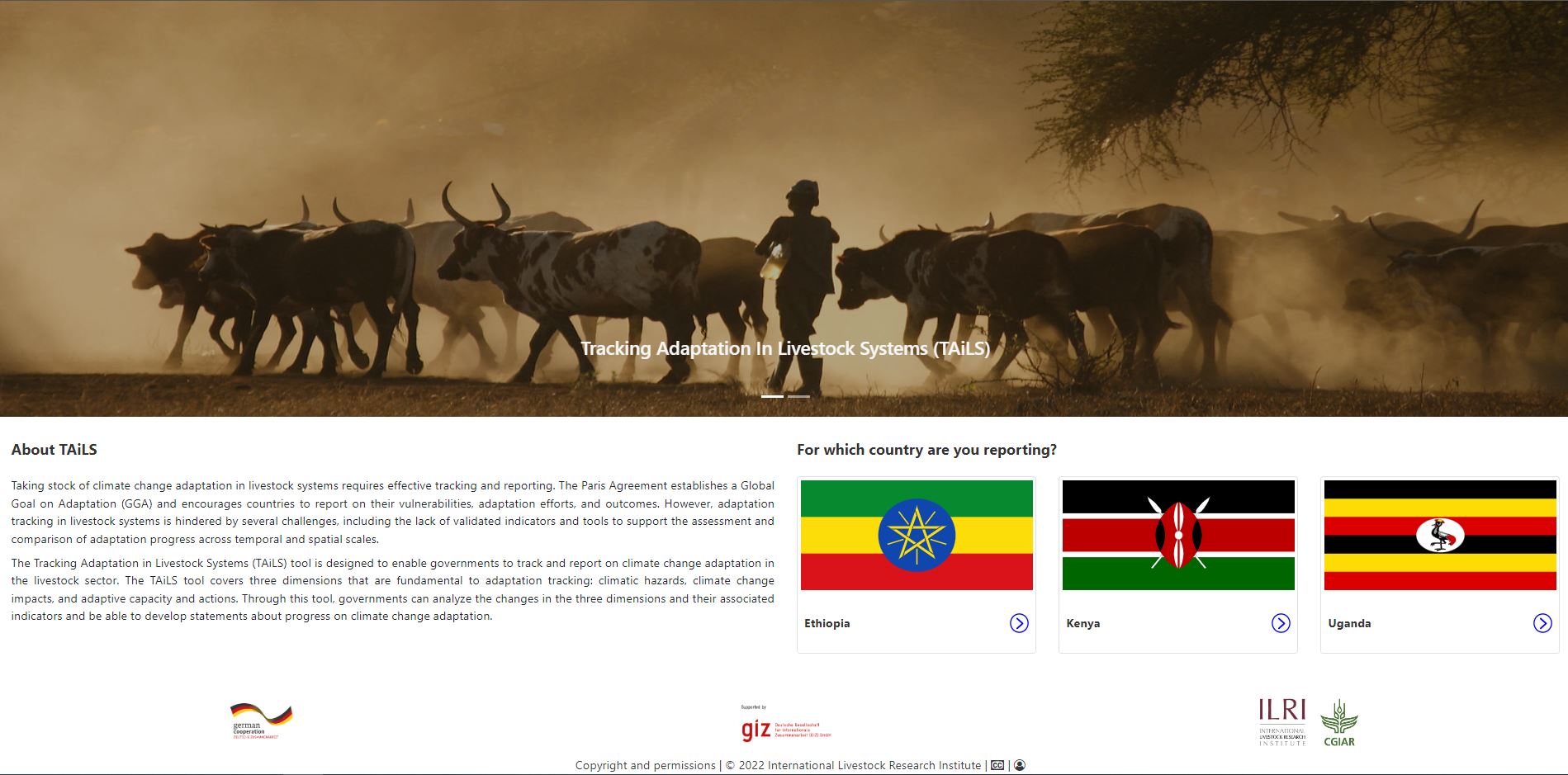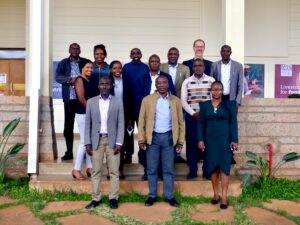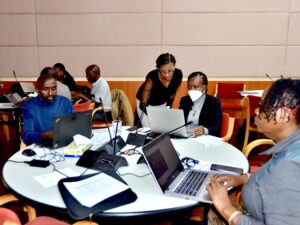A new adaptation tracking tool will help countries capture climate adaptation actions in livestock systems
-
From
CGIAR Initiative on Livestock and Climate
-
Published on
05.12.22
- Impact Area

The climate crisis is not a future phenomenon, it’s happening at everyone’s doorsteps – from extreme temperatures, unprecedented floods to recurring droughts. Although the international climate agenda has been heavily focused on mitigation efforts, climate adaptation is increasingly a priority, especially in the Global South.
Agriculture is one of the sectors suffering the most. In East Africa alone, an estimated 8.9 million livestock have died this year from drought, impacting the food security and livelihoods of smallholder farmers and pastoralists. Successful climate adaptation by countries will require coordinated efforts across all sectors – from public to private – from national to international levels. It will also require financial support. Tracking adaptation efforts of countries, therefore, is a key priority and in response, the International Livestock Research Institute (ILRI) has developed a tool to track adaptation specifically in livestock systems.
Called TAiLS (Tracking Adapation in Livestock Systems), the web-based tool will enable national governments to track and report on adaptation activities and efforts in the livestock sector. It has been designed to support the Paris Agreement’s requirements for countries to submit Nationally Determined Contributions (NDCs), which reflect each country’s commitments to climate mitigation, adaptation and the mobilization of resources for climate action. It also responds to the Paris Agreement’s Global Goal on Adaptation (Adaptation Art. 7), which articulates countries’ collective ambition to reduce climate change vulnerability and enhance adaptive capacities and resilience. Besides showing progress in adaptation, adaptation tracking would support efforts to mobilize adaptation funding.
Charting uncharted adaptation territory
Tracking adaptation isn’t a straightforward exercise. Existing tools are not designed to compare adaptation at aggregated levels, and data required for reporting is scarce.
‘Adaptation is an abstract concept, and measuring it is complicated. Whereas mitigation has its own set of metrics to measure greenhouse gas emissions, this is not the case for adaptation,’ explained Lucy Njuguna, a research fellow at the International Livestock Research Institute, who has been leading the development of the tool.
‘So to develop the tool, we worked closely with countries to identify the appropriate adaptation tracking indicators – not only to ensure that they are fit for purpose but that they are also aligned with adaptation plans and priorities.’
Extensive research in livestock systems were conducted in Ethiopia, Kenya and Uganda, including consultations with research partners, policy makers as well as livestock keepers. To meet international reporting requirements, the tool has been designed to enable countries to track progress within the livestock sector, capturing changes within and between populations, including different parts of natural and social systems, such as the quality of the environment and the state of the economy.

Kenya could soon be an early adopter of the tool, with Ethiopia and Uganda to follow
A prototype of the TAiLS tool was introduced on 1st November to a group of government officials from Kenya’s Ministry of Agriculture and Livestock Development and county departments of agriculture. The goal of the 1-day meeting was to gather feedback on the tool’s usability and effectiveness in achieving what it was designed to do. Workshop participants were shown how to use the TAiLS tool step-by-step – from logging onto the website to analysing data. At each step, participants provided feedback by scoring the interfaces and explaining what needed to be changed.
Since the tool is meant to use data from both national and local governments, the participants also discussed how best to support coordination between the counties and the state department of livestock in producing the data necessary for adaptation tracking.

The overall response to the tool was positive.
‘For us, it is a privilege that we are beneficiary of a process that is going to come up with a tool that could actually enable us to look at the interventions we have,’ said Bernard Kimoro, head of the Climate Change and Livestock Sustainability Section in the State Department for Livestock at Kenya’s Ministry of Agriculture and Livestock Development.
‘The tracking tool is a novel idea which would be able to support us and understand at the programmatic level, what progress we are making.’
Once adjustments have been made to the TAiLS tool based on feedback from the participants, the next steps will consist of training Kenyan government officials on how to use the tool and providing support towards institutionalizing adaptation tracking. Similar workshops and efforts will be made in Ethiopia and Uganda.
The TAiLS tool was developed under the Program for Climate Smart Livestock, which was funded by the Government of the Federal Republic of Germany (BMZ). Its further development will continue under the CGIAR Livestock and Climate initiative, which is supported by contributions from the CGIAR Trust Fund.
For more information, contact Lucy Njuguna or Todd Crane.
—
Banner photo: a screenshot of the TAiLS tool. Visit the tool here.
Story by Madeline Wong, ILRI
Related news
-

Mapping for Resilience: How Spatial Data is Transforming Karamoja Cluster
Ibukun Taiwo02.07.25-
Climate adaptation & mitigation
Pastoral communities in the Karamoja Cluster (a region spanning Kenya, Uganda, South Sudan, and Ethi…
Read more -
-

Building Resilience and Regeneration: The Central Highlands Ecoregion Foodscape (CHEF)
Sehlule Muzata02.07.25-
Climate adaptation & mitigation
At the CGIAR Sustainable Farming Program (SFP), we believe that collaboration is essential for trans…
Read more -
-

Integrating Climate Security into the Future of UN Peacekeeping in Africa
Ibukun Taiwo30.06.25-
Climate adaptation & mitigation
Explicit mentions of climate security have been removed or weakened in recent UN mandates. For…
Read more -
